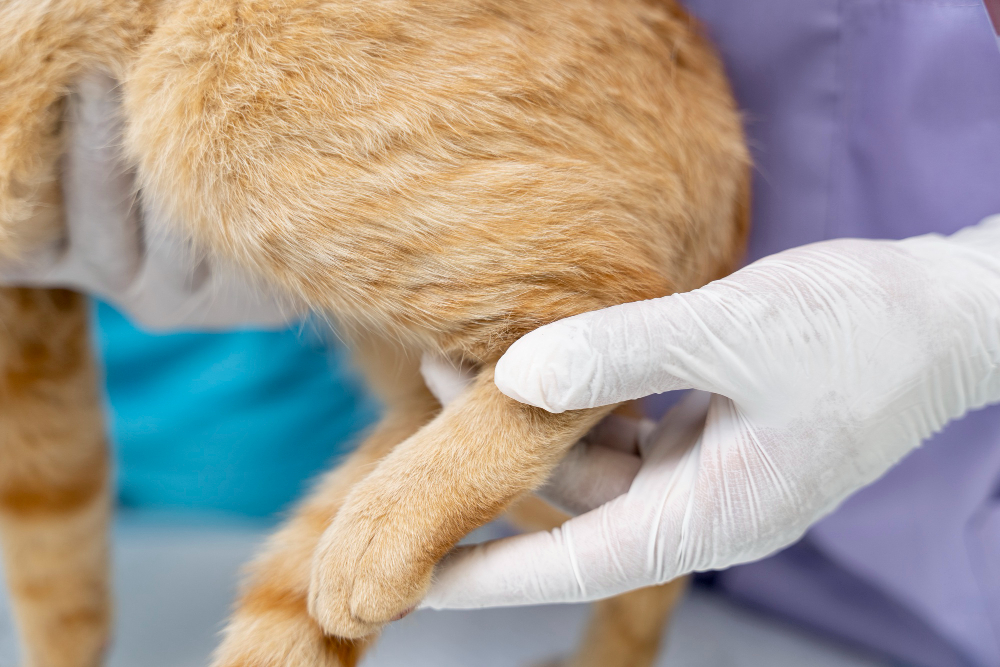If you’ve noticed that your pet is walking slower than usual or is reluctant to go on as many walks as they used to, your pet might be developing joint issues. This is especially the case if your pet is a senior, and some dog breeds, such as Labradors and Great Danes, are more likely to get joint conditions than others.
It can be distressing to watch your pet suffer, and you might be desperate to alleviate or help them manage their joint pain. Then, if this is the case, here’s what you can do for your pet if their joints have started to become a problem for them.
Change Their Food
One of the most straightforward steps you can take toward healthy joints for your pet is to change the food you offer them. Even if your dog loves the food that you currently give them, many options on the market have been specially developed for dogs that are having difficulties with their joints. This food is typically filled with vitamins and minerals that can help to support the joints.
If you don’t feel that these specialist joint foods are suitable for your pet, or your pet has other health issues, too, you might look into natural pet food that’s filled with goodness and can boost their general health, immune systems, and bodily functions.
For those who don’t want to swap their pet’s food or those who have fussy pets, joint supplements could be the answer. When paired with the right diet, these supplements can support the health of your pet’s joints and contain a number of important extracts, such as marine collagen and wheatgrass.
Visit a Vet
Whether your pet is in an obvious amount of paint or you’ve just started to notice that something isn’t right, you should make sure that you book an appointment with your dog’s vet as soon as possible. The vet will be able to judge their symptoms and diagnose any conditions that they have, including age-associated ones. They’ll also be able to prescribe any pain and anti-inflammation medications that your pet may need to cope with their condition and give you advice about beneficial lifestyle changes that you can make for your furry friend.
Not only this, but they may recommend or refer your pet for certain alternative treatments, such as massage therapy and acupuncture. These could help your pet to maintain a high quality of life and thrive for longer. However, before you take your pet to a vet, you should make sure that the vet is trustworthy, experienced, and qualified. You can do this by looking for vet reviews online or getting recommendations from fellow pet owners. If you’re not happy with the care that your pet has received, you shouldn’t be afraid to seek out a second opinion.
Check Their Pet Insurance
Many people put off vet visits for their pets because they’re worried that they won’t be able to afford the bill for the appointment or any treatment that they’re prescribed. The cost of your pet’s care might end up being a huge worry for you, and while you’re fretting about this, your pet might get sicker and sicker.
Instead of being constantly concerned about the cost of the medical bills that your pet is racking up, you should check your pet insurance [policy and see what it covers. Although many pet insurance policies don’t cover pre-existing conditions, if your pet’s joint issues are new, you might get the compensation you need to cover your pet’s bills and avoid getting into financial trouble to pay them. If you haven’t yet taken out coverage, you should consider looking at Toto Pet Insurance for your dog.
Moderate Their Exercise
Just because your dog has a joint disease, this doesn’t mean they can get away with lounging in bed all day. In fact, walking your dog can prevent their joints from worsening and can improve the pain that they’re experiencing. However, it can be difficult not to drive your pet too hard when you’re walking them, especially if they once wanted to go much further.
Instead, you should take their lead, and turn back when they’re getting tired. You should take them on frequent, shorter walks, instead of one long walk a day, and you should be careful that they don’t overexert themselves if you let them off the leash. You might also consider exercise options such as hydrotherapy, which can allow your pet to exercise in a way that relieves the strain on their body.
Research Joint Problems
The top step that you can take for your pet if you’re not a vet yourself, though, is to research the joint issues that your pet has. This could allow you to know how to support them more and can ensure that you know what to expect in the future. However, you should always make sure that you’re using reputable websites to get your information, and that you don’t substitute a vet’s visit for this research. Research can simply help you to stay informed about possible treatments and what’s happening to your pet’s body, which can help to calm your mind and advocate for your pet when you next go to the vet’s office.
Help Them Lose Weight
Although this isn’t always the case in senior pets, sometimes, your pet might have started to have joint conditions because they’re overweight. Luckily, this means that there could be an easy solution to your pet’s health issues, and all you need to do for them is to help them lose weight.
You might be able to do this by stopping giving your pet so many treats, by getting them a lighter, specialist food and giving them smaller portions of it, and by creating a rigid exercise routine for them. You might even book them in for a weight loss class that can help your dog to lose weight under expert advice from some of their peers.






